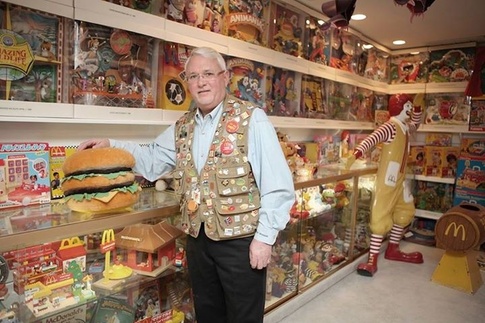When We Buy, We Sell (Or Why I Won't Get an iPhone6)
The line at Highpoint Shopping Centre, Melbourne, Australia
So it’s that time of the year again, when a new version of the iPhone is released and met with much excitement. Diehard fans happily line up to get their hands on the magic phone before everyone else. In Adelaide, Australia, long lines form outside the stores, despite the drizzling rain that has kept the temperature at 4 degrees Celcius.
Adelaide, Australia.
I was told that many of them were “bodies”, hired by phone shops to queue and acquire the shiny new phone (which is sold with a quota of 2 max per person). Some are paid $100 for waiting in line, which can take up to 9 hours.
My immediate reaction was something along the line of “well I would NEVER”. Despite the fact that I own and use an iPhone, an iPad, a Mac, and various other items with a half-eaten apple logo on them, I have always been standing adamantly in the camp of “Apple is way overhyped and I am not stupid enough to join their cult”. I’m not alone. There are many like me who would tell anyone and everyone who would listen, that we don’t care about Apple.
But you have to admit, when a brand can make people feel so strongly about them, they must be doing something right.
That brand probably understands very well that as consumers, when we buy something, we are selling something. We are selling the story about ourselves. The product or service is incorporated into our favourite story - the story in which we are hip, beautiful, popular, tech savvy, ahead of the curve, enlightened, social and environmental conscious.
I roll my eyes at the people who line up for an iPhone, because I want everyone including me to know that I am level-headed and don’t follow the herd. That I am cooler and smarter than those crazy sheeple. That it’s not critical that I must use products from popular brands like Apple. The fact that I do use their products is beside the point. “I don’t care for the shiny thing just because it is shiny” - this is my story and I am sticking to it.
(Whereas this guy, the iPhone 6 Fan Started Waiting in Line 7 Months Early in Japan, obviously has a very different story to tell.)
As Rich Teerlink, the CEO of Harley-Davidson Motorcycles, once said: "We don't sell motorcycles. What we sell is the ability for a 43-year-old accountant to drive through a small town dressed in black leather and have people be afraid of him.”
We are very conscious of convincing others to buy our story. That’s why we like, post, favourite, retweet, and comment on that article about Big Data.
We sell stories about ourselves online everyday - with an astonishing amount of effort - on Facebook, Twitter, LinkedIn, dating sites. Offline, the story is in what we choose to wear, the car we drive, the coffee chain we visit, the sports team we cheer for, and so on. Products and services can play a big role in broadcasting our favourite story; and that plays into how we consider to buy or not to buy something. We have our favourite brands, whether it is Starbucks, Coca Cola, Lego, Disney, Gucci, or IKEA. We know what these brands stand for, and we play eager advocates.
Smart brands understand this, and great brands are great story butlers. They invest serious time to understand who their customers are and what story their customers want to sell.
Businesses, marketers, companies, brands, listen to me. Your job is to give your customer a story to sell.
We are all in sales now.


